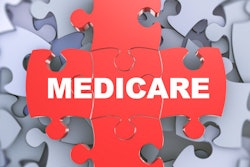
Our review of the proposed 2019 Medicare Physician Fee Schedule (MPFS) showed that 201 professional component (PC) codes and 213 global codes were to be decreased by at least 1% in the diagnostic radiology 70000 series of current procedural terminology (CPT) codes.
In the final MPFS, only 46 PC codes were reduced by 1% or more, but 280 global codes were reduced by at least 1%. The number of codes expected to increase in payment did not change as dramatically, but in both PC and global billing, fewer codes were increased than we expected.
| Changes to codes in the 2019 MPFS | ||||
| Professional component | Global | |||
| Proposed | Final | Proposed | Final | |
| Decrease of 1% or more | 201 | 46 | 213 | 280 |
| Increase of 1% or more | 47 | 45 | 187 | 172 |
| Change of less than 1% | 342 | 474 | 150 | 77 |
| Total procedure codes | 590 | 565 | 550 | 529 |
Diagnostic radiology
The two codes for unilateral and bilateral breast MRI were replaced by four new codes that provide for the distinct billing of noncontrast exams, which previously had to be billed using the "with/without contrast" (w/wo) codes.
| Coding for breast MRI | ||||
| Description | Professional component | Global | ||
| 2019 | Comparable 2018 | 2019 | Comparable 2018 | |
| 77046: MRI breast, without contrast, unilateral | $74.24 | $83.52 | $252.99 | $552.23 |
| 77047: MRI breast, without contrast, bilateral | $82.17 | $83.52 | $259.84 | $549.71 |
| 77048: MRI breast, without and with contrast, unilateral | $107.40 | $83.52 | $401.84 | $552.23 |
| 77049: MRI breast, without and with contrast, bilateral | $117.49 | $83.52 | $410.49 | $549.71 |
The result of these changes is a slight decrease in the "without contrast" PC and a significant increase in the "without and with contrast" PC. The technical component was drastically reduced by 62% for "without contrast" exams and by 37% in the "without and with contrast" exams, resulting in corresponding cuts in the global fees.
Note that the codes 77048 and 77049 also include computer-aided detection (CAD), real-time lesion detection, characterization, and pharmacokinetic analysis when performed. This bundling eliminates the separate use of Healthcare Common Procedure Coding System (HCPCS) code 0159T, a locally priced code that was previously added when performing CAD.
The proposed rule showed significant decreases for some neck and spine PC codes, but in the end, those codes were increased slightly.
| Coding for neck and spine | ||||
| Description | CPT code | Final 2019 rate | Expected change | Final change |
| Neck spine 4/5 views | 72050-26 | $16.22 | (19.9%) | +0.1% |
| L-2 spine 4 or more views | 72110-26 | $16.22 | (19.9%) | +0.1% |
| Neck spine 6 or more views | 72052-26 | $18.74 | (19.1%) | +0.1% |
| L-S spine bending | 72114-26 | $16.94 | (19.0%) | +0.1% |
Other PC procedures that fared well in the final rule compared with the proposed rule included MRI brain, both with and without contrast (70557 and 70558). These had been scheduled for a 7% decrease, but instead ended up with a 0.3% decrease at the final fee schedule amount of $160.01 and $176.23, respectively.
Procedures for which large increases had been proposed saw smaller increases, although the PC for CT needle biopsy was minimally increased, as was the global transrectal ultrasound.
| Procedures with smaller than expected increases | |||||
| Description | CPT code | Professional component | Global | ||
| Expected | Final | Expected | Final | ||
| Spine x-ray 1 view | 72020 | 50.2% | 0.1% | 25.6% | 3.3% |
| Elbow x-ray 2 views | 73070 | 48.0% | 0.1% | 14.4% | (1.2%) |
| Heel x-ray | 73650 | 43.7% | 0.1% | 11.8% | (1.2%) |
| Forearm x-ray | 73090 | 37.7% | 0.1% | 24.8% | 8.3% |
| Elbow x-ray 3+ views | 73080 | 32.2% | 0.1% | 4.6% | (5.5%) |
| Sacrum tailbone x-ray | 72220 | 32.2% | 0.1% | 21.4% | 7.6% |
| Sacroiliac (SI) joints x-ray < 3 views | 72200 | 32.2% | 0.1% | 21.4% | 8.9% |
| SI joints x-ray 3+ views | 72202 | 18.7% | 0.1% | 13.0% | 5.5% |
| CT for needle biopsy | 77012 | 28.4% | 29.0% | 22.0% | 21.1% |
| MR angiography (MRA) upper extremity w/wo | 73225 | (0.7%) | (1.1%) | 17.5% | 15.8% |
| MRA spine w/wo | 72159 | 0.5% | 0.5% | 21.1% | 19.4% |
| DEXA peripheral | 77081 | (6.3%) | (6.3%) | 20.2% | 17.6% |
| Ultrasound abdominal aortic aneurysm (AAA) screening | 76706 | 0.1% | (1.2%) | 19.5% | 19.1% |
| Ultrasound transrectal | 76872 | (3.0%) | (0.9%) | 28.5% | 31.8% |
A few global billing codes experienced unexpected changes:
- The code for CT angiography abdominal arteries (75635) received a 13.6% cut, whereas the proposal had been for a 0.3% increase. The final fee is $323.27 for this procedure.
- The code for CT angiography abdomen and pelvis, without/with contrast (74174) received a 10.4% increase rather than a 5.1% decrease. The final fee is $402.20 for this procedure.
- The code for cardiac MRI with stress imaging (75559) received a 21.6% increase rather than a 1.1% decrease. The final fee is $460.22 for this procedure.
It should be noted that all fees quoted here are from the national Medicare fee schedule, before adjustment for geographic indices.
Interventional radiology
Interventional radiology took some losses in the 2019 fee schedule. As proposed, the large decreases in placements of peripherally inserted central venous catheters (PICC) were retained in the final rule, and nephrostomy catheter exchanges suffered a 9.1% decrease instead of a 10.4% increase. Other proposed increases were retained but at a lower level.
| Coding for interventional radiology | |||
| Description | CPT code | Proposed | Final |
| Insert PICC catheter < age 5 | 36569 | (61.3%) | (61.3%) |
| Insert PICC catheter age 5+ | 36568 | (57.2%) | (57.2%) |
| Fine-needle aspiration without imaging | 10021 | (21.8%) | (19.8%) |
| Exchange nephrostomy catheter | 50435 | 10.4% | (9.1%) |
| Cystoscopy | 52000 | 11.6% | 14.1% |
| Injection for cholangiogram | 47531 | 11.7% | 10.0% |
| Removal of biliary drainage catheter | 47537 | 12.1% | 10.6% |
| Replace PICC catheter | 36584 | 70.4% | 67.9% |
Analyzing your practice
 Sandy Coffta from Healthcare Administrative Partners.
Sandy Coffta from Healthcare Administrative Partners.The result of all these changes on an individual practice can only be evaluated through a volume-weighted analysis. This process involves gathering data from the previous year, by CPT code, that show the number of times each procedure code was billed for Medicare patients.
The procedure volumes are multiplied by the 2018 Medicare fee schedule rates in one column, and again by the 2019 Medicare fee schedule rates in another column. Totaling each column will reveal the total practice revenue for the previous year and the reimbursement that the practice could expect in the current year if the volume of each procedure was unchanged. The percentage increase or decrease can then be calculated.
Medicare's data predict that the resulting change between 2018 and 2019 will be 0% for both diagnostic and interventional radiology. However, if your practice performs more than the average number of procedures that had a large increase or decrease, your individual results will reflect that variation. The same analysis can be applied to commercial payor fee schedules that are calculated as a percentage of the Medicare fee schedule.
Conclusion
Understanding the annual changes in Medicare's fee schedules is useful when analyzing areas where your practice's revenue might be increasing or decreasing. Many commercial payors base their fees on the Medicare table, although not all of them make the same changes, or at the same time, as Medicare does.
The American College of Radiology (ACR) always prepares a detailed analysis of the MPFS that contains background discussion of the current Medicare changes as well as information about what might be coming in future rulemaking.
Sandy Coffta is vice president of client services at Healthcare Administrative Partners.
The comments and observations expressed are those of the author and do not necessarily reflect the opinions of AuntMinnie.com.



















